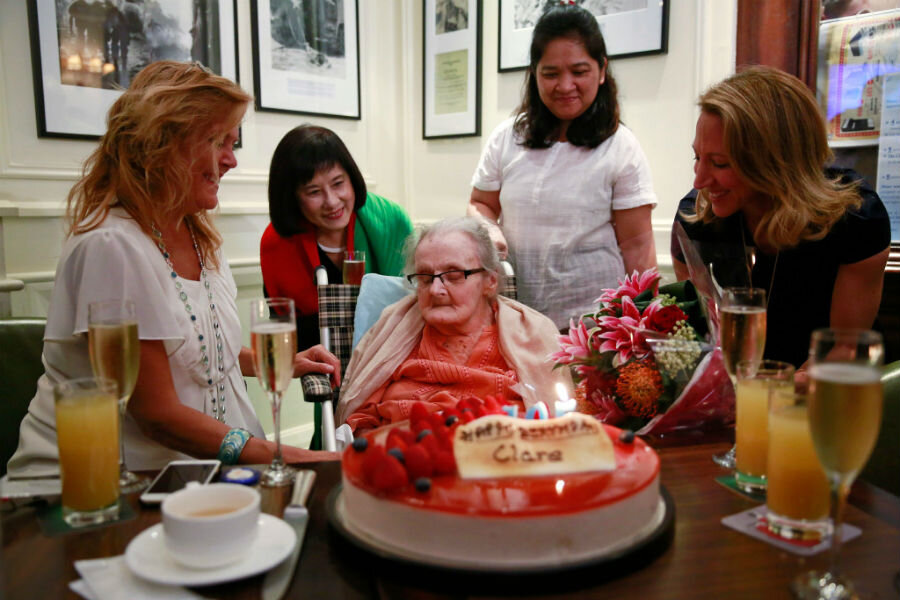Clare Hollingworth: Legendary journalist broke the mold for women reporters
Loading...
Clare Hollingworth, the journalist credited with breaking the news of World War II in “the scoop of the century,” died Tuesday in Hong Kong.
Some have argued that Ms. Hollingworth just happened upon the site of “large numbers of troops, literally hundreds of tanks, armored cars and field guns” in Poland, which revealed how close Germany was to waging the brutal war. But her work in the following decades sent her scouring the globe for sources and stories, cementing her legacy as one of the greatest war correspondents in history – and one of the world’s pioneering female reporters.
Born in Knighton, England, in 1911, Hollingworth had a traditional upbringing and became engaged at a young age. But upon realizing that she would prefer a life as a reporter to one as a housewife, Hollingworth broke off the engagement and began working for the League of Nations Union before landing her first reporting job at The Telegraph as a correspondent in Warsaw.
During her first week on the job in 1939, she witnessed the German military stockpiles, telephoning her editor with the world exclusive news of the impending war, The New York Times reports.
When explosions and firing broke out just days later, she called the British Embassy in Warsaw, holding the phone out the window to share the news.
From there, she covered WWII in Eastern Europe, North Africa, and the Balkans. She spent the next several decades in Vietnam, Algeria, and Palestine, covering other conflicts before opening a Beijing bureau for the Telegraph, where she became one of the first Western reporters to set up a permanent post in China.
"I enjoy action," Hollingworth told the BBC in a video celebrating her 104th birthday in 2015. "I enjoy being in a plane that's bombing something, or being on the ground in the desert when they're advancing."
Hollingworth was one of just a few women working in war zones, which were seen as spheres for men and dominated by them. But she proved over and over that she could more than keep up, sleeping in the desert, parachuting from planes, and finding alternative arrangements when male commanders ousted her from press contingents.
“It was essential to be able to go without washing, sleep in the open desert, and live on bully-beef and biscuits for days on end,” she recalled in 1990 book “Front Lines,” one of five she wrote detailing her days as a reporter. “Many male correspondents got themselves sent back to Cairo because they could not take it.”
Her work appeared in The Wall Street Journal, The Guardian, and The International Herald Tribune. While Hollingworth left the battlefields behind in her old age, she never really retired; she chose to remain in Hong Kong permanently and often called into The Guardian’s London newsdesk.
Many reporters still look to her work as an example of groundbreaking journalism.
“Clare Hollingworth exemplifies brilliant journalism,” the BBC's Kate Adie said in a video honoring Hollingworth last year. “She was an eyewitness. The big thing, especially with the huge stories, and you don’t know it’s going to be a huge story, is to get there and see it for yourself.”






